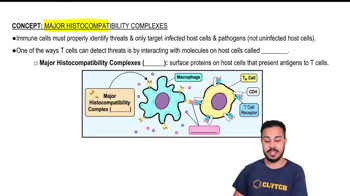Multiple Choice
The P wave of an electrocardiogram represents __________.
1610
views
2
rank
 Verified step by step guidance
Verified step by step guidance Verified video answer for a similar problem:
Verified video answer for a similar problem:



 9:48m
9:48mMaster Electrocardiogram with a bite sized video explanation from Bruce Bryan
Start learning